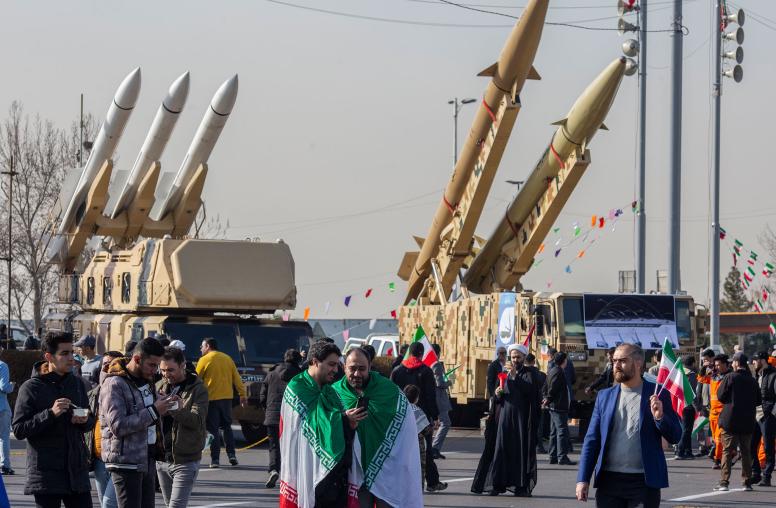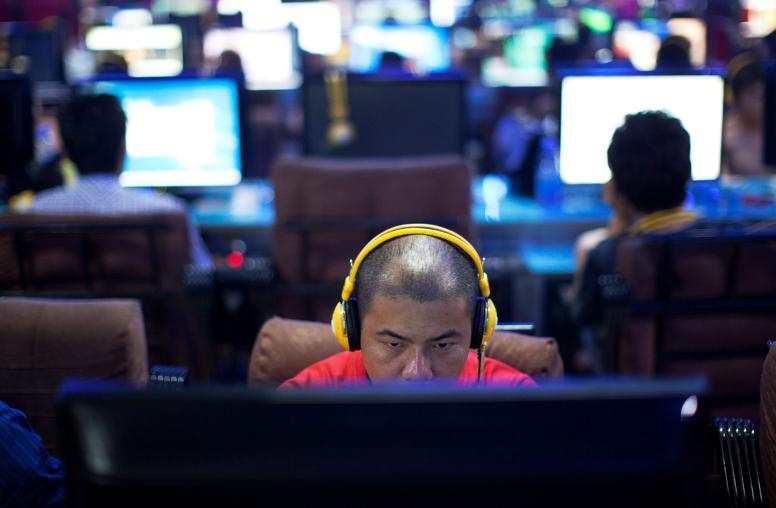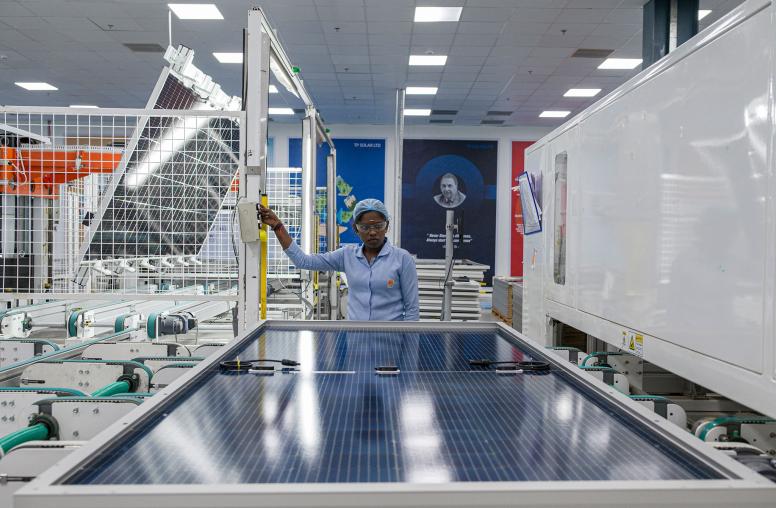China’s Belt and Road: Progress on ‘Open, Green and Clean?’
As Beijing struggles to recalibrate its signature initiative, COVID-19 creates new risks and potential opportunities.
A year ago, Chinese leaders committed themselves to cleaning up their act in pursuit of the Belt and Road Initiative (BRI)—Beijing’s plan to connect China to the world largely through infrastructure projects. The BRI had become synonymous with environmental degradation, corruption, and lack of transparency, and China’s top officials pledged new approaches. The Belt and Road Initiative, they said, would become “open, green, and clean” as it worked with partner countries to build public works, deepen trade linkages, and advance financial and development policy connections around the world.

China now faces a range of new challenges to the BRI as the COVID-19 pandemic first took a toll on the Chinese economy and now has brought the global economy to a crushing standstill.
In response, the Chinese government has introduced further initiatives to shore up the BRI and address the pandemic, while continuing to pay lip service to its earlier vows of reform. For example, in March, the China Development Bank and China’s Ministry of Commerce jointly issued a circular offering subsidized loans and other financial benefits and incentives for so-called “high quality” BRI projects affected by COVID-19. They also launched the Health Silk Road as a complement to infrastructure projects, mobilizing a full range of Chinese government and commercial entities to shower BRI host countries with medical assistance.
It’s possible, of course, that the pandemic ultimately will lead to seismic shifts in the BRI. From Beijing’s vantage point, the crisis creates two new—and opposing—potential scenarios. The first is something of a nightmare for Beijing. China, amid its own slowdown, may soon face BRI partner countries defaulting on debts, canceling or renegotiating BRI agreements, or lowering the priority of the BRI to focus on the pandemic and its impacts. On the other hand, China’s state-owned banks are still awash in cash. The economic struggles of BRI partners may open the way to snapping up distressed assets or strategically repositioning existing BRI projects after—or even during—the crisis.
Clearly, it remains to be seen how the pandemic will affect the BRI. It’s not too soon, however, to ask how Beijing’s commitment to making the initiative “open, green, and clean” has worked out. The preliminary answer is that, on the ground, little to no change has occurred.
Open: Basic Project Information Remains Unavailable to the Public
At the April 2019 Belt and Road Forum, Beijing’s biannual showcase of the BRI, General Secretary of the Chinese Communist Party Xi Jinping asserted that “in pursuing Belt and Road cooperation, everything should be done in a transparent way.” Beijing introduced the Beijing Initiative for Clean Silk Road as a symbol of its commitment to transparency. The initiative called on participating companies and governments to make information more readily available and to strengthen supervision of BRI projects, and offered training seminars for state-owned enterprises to emphasize the importance of transparency. Despite the promised reforms, however, transparency, governance, and oversight remain limited.
In practice, Chinese government think tanks publicly recognize that China continues to struggle with transparency. Since 2015, scholars from the Chinese Academy of Social Sciences have published the Annual Report on China’s Companies Public Transparency. The most recent report, released in November 2019, also found that Chinese companies on the whole “failed to meet standards” with respect to transparency and that companies from central and western China performed particularly poorly. The report also found that Chinese companies tend to disclose information only in annual reports and “rarely respond to specific requests for information from the public.”
There is also no indication that Beijing has taken good-faith measures to enhance flows of public information. The contents of BRI memorandums of understanding—the very basic building blocks of BRI collaboration—are not yet publicly available. While the government continues to maintain and regularly update its official Belt and Road Portal, the vast majority of content on the website is focused on official speeches or trade statistics rather than information regarding project contracts.
Green: Progress on Guidelines Outpaces the Moves of Chinese Companies
Progress toward greening the BRI has been somewhat more meaningful. One major outcome of the 2019 BRI Forum was the adoption by roughly a dozen countries of the Green Investment Principles for Belt and Road Development (GIP). While the principles, which were drafted collaboratively by the U.K. and China, are broad and nonbinding, they do require that financial institutions publicly commit to conducting environmental impact assessments for their investments. A significant number of Chinese and international banks, including the Bank of China, Standard Charter, and Deutsche Bank have signed on to the principles.
These public commitments are useful. Domestic Chinese banking practices are in fact shifting to green finance, even if companies have been slow to incorporate the measures into their projects. A study by Tsinghua University found that if BRI countries do not change their behavior, they will contribute up to a 3-degree Celsius increase in temperatures based on emissions levels. Further, a study by Boston University found that almost 40 percent of new Chinese energy projects in 2019 supported by the Export-Import Bank of China and the China Development Bank were coal-based, despite these banks being founding signatories to the GIP.
Promotion of the principles has also been ineffective in most developing countries. Other than Singaporean banks, no other financial institutions from Southeast Asia have signed on to the principles.
Supporters of the principles argue that another key achievement of the Belt and Road Forum—the establishment of a BRI International Green Development Coalition (BRIGC)—represents the best prospects to green the BRI. The BRIGC is an international network of environmental ministries, INGOs, researchers, and international agencies that works to advance environmental sustainability along the BRI. It has expanded rapidly over the past year, with organizations such as the World Wildlife Foundation, Client Earth, and the World Resources Institute becoming active under the leadership of the Chinese Ministry of Ecology and Environment. The BRIGC network has churned out draft guidelines and held a number of meetings, yet it struggles to engage with implementers on the ground or to get traction from Chinese companies and commercial associations.
Clean: Corruption Still Rampant
The Beijing Initiative for the Clean Silk Road announced last April not only promoted transparency, but also encouraged BRI partner countries to bolster their ability to fight corruption and bribery through stronger legal systems.
At the 2019 forum, China pledged to “sponsor the first session of Belt and Road Legal Cooperation Research and Training Program, co-organize a seminar on business integrity and compliance with the World Bank, and hold an anti-corruption seminar for Belt and Road countries.” Chinese officials have offered trainings for foreign anti-corruption officials, and in October, China’s National Commission of Supervision signed a memorandum of understanding with the United Nations on cooperation to combat corruption. China has also extended its party-led crackdown on corruption to the managers of its outbound state-owned enterprises, which to some degree has checked those companies’ corruption overseas.
While these efforts represent a welcome step forward, most BRI partner countries lack the regulatory capacity to counter corruption, particularly on large projects where money is flowing freely—and sometimes back to China. In order to avoid China’s anti-corruption campaign at home, a number of private companies and investors have relocated to countries with weak governance. After co-opting elites to obtain contracts, private companies can then turn around and sell to state-owned enterprises or publicly traded Chinese companies. This helps explain how unknown companies with no experience in the energy sector have managed to win significant contracts in countries like Cambodia and Myanmar.
COVID-19 and Paths to a Healthy BRI?
As the world struggles to recover from the economic consequences of COVID-19, the BRI has the potential to produce much-needed infrastructure projects and economic growth. But countries will want to know that these projects are in their best interest.
China’s efforts toward “open, green, and clean” cooperation have failed to yield much progress, but the global health pandemic offers China an opportunity for another reset. China has tried to emphasize that its COVID-19 bailout will prioritize “high quality” projects, without indicating exactly what this means. If serious, Beijing should be clear about the standards that it will follow in allocating these funds to specific projects.
If China wants to see real progress toward its stated BRI goals, measures must go far beyond voluntary guidance and trainings of host country officials. For a green BRI, Beijing could introduce binding standards that prohibit projects causing significant environmental damage and severely penalize corrupt practices of its nationals overseas. If China wants to increase transparency and combat corruption, it could simply begin divulging details of BRI agreements and projects to the public—or better yet, consulting with public audiences before signing these deals.
China’s lack of transparency has sparked global concern about its possible responsibility for the present pandemic crisis. A dramatic turn to transparent conduct at this juncture could demonstrate that Beijing might still be a trustworthy partner.



